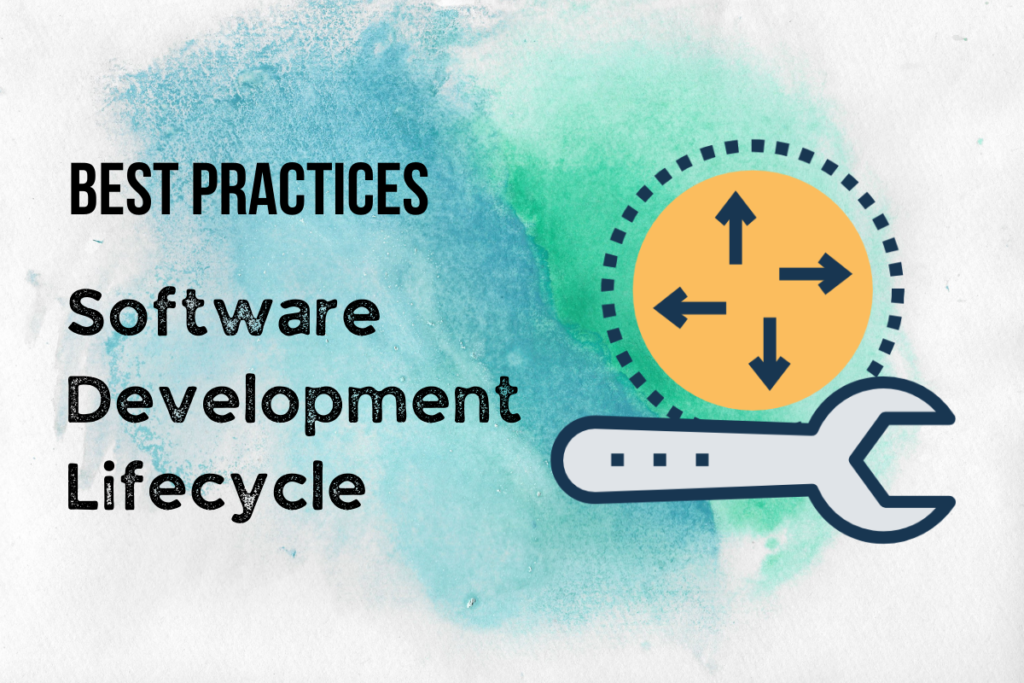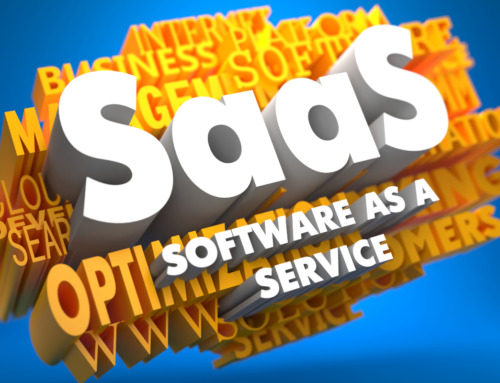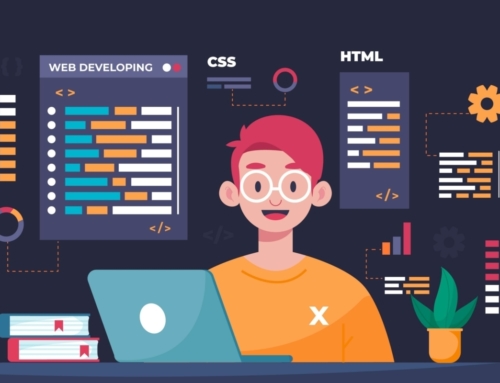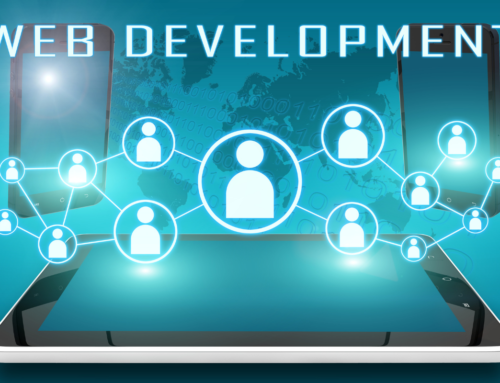
It all starts with a dream or an idea to build software to provide a better solution for a problem or make our lives easier. Then it comes to completing the development and delivering the end product to its customers, and properly maintaining it.
Software development goes through a couple of stages or phases and has different models too. Without proper guidelines and directions, we cant work on a project. It would be chaos, and the work done would not have optimum quality. So it is better to choose a particular SDLC model and follow the phases and stages it goes coupling it with the best practices to follow.
So, what exactly is SDLC?
What is SDLC?
SDLC is simply Software Development Lifecycle, which has been briefly described here. In short, Software development lifecycle or SDLC is a framework or a model which represents or shows how softwares are developed in a series of steps. This will help define tasks and work phases for engineers and developers to plan, analyze, develop, test, deploy and maintain the software.
What is secured SDLC, and why is it important?
Security is the most outlooked feature by everyone, like securing database from attacks wicked viruses or from processing fraud.
Secured SDLC is nothing but a collection of the best practices indulged for better security. Instead of focusing on the functionality of the software, secured SDLC is more into the security part. Where in each phase security of the software has the most importance. With a dedicated effort at each phase/stage, issues related to security can be addressed in the SDLC pipeline. This will reduce the risk of finding security issues on the app and tries to minimize the impact.
This approach doesn’t completely eliminate the traditional security checks, but it is to empower the developers to build a secure application.
Why is Software Development Lifecycle management important?
SDLC will help you increase the software quality, decrease the production time, and cut down development cost. It will also help reduce errors and mistakes as all the stages, rules, and work phases are predetermined. Check out the importance and benefits of Software Development Lifecycle to explore how SDLC is important to you.
What are some secure models in Software Development?
Software development models are in abundance, and you can choose any one of them, whichever suits your needs. Though some of the most popular and effective models are as follows:
- DevOps
DevOps is a practice where the Development and Operations (infrastructure) team are combined with the objective of accelerating the Software Development Lifecycle. To understand how DevOps benefits your business in ‘How involvement of DevOps in the business process benefits you’, DevOps includes practices like continuous delivery, monitoring and logging. It is a combination of both Agile and Iterative development.
- Agile Development
Agile Development is a combination of a both incremental and iterative approach to development. Unlike the Waterfall model, Agile development is divided into short sprints that combine all development phases. After each sprint ends, the stakeholders analyse it and set goals for the next sprint.
- Waterfall Development
Water development is one first software development approach where the process is broken into sequential linear phases. The development process passes through well-defined phases, and which produces deliverables move on to the next phase.
- Iterative Development
Iterative development is an approach where the whole software development process is broken into smaller parts. It consists of the whole development cycle using short and repeated cycles from minimal software solutions to complete software. Agile development is an iterative approach to the software development process.
- Lean Software Development
The Lean Software Development approach is leaned towards reducing wastage by eliminating activities that don’t provide the customer direct value, like ineffective communication, repeated work, and other management activities.
- Spiral Development
The Spiral development approach is more towards risk reduction combining the elements of waterfall development and the iterative development approach.
- V-Model Development
The V-Model development approach is a slightly modified version of the waterfall approach. Where all the phases are in a sequential manner identical to the waterfall model but the Validation and verification phases joins the coding phase in a V shape.
What are the stages in Software Development Lifecycle?
Just a few sentences back, we have said that the software development lifecycle goes through different stages. These stages represent each situations software developers and engineers go through, be it planning, testing or deployment.
While knowing about the stages, it is important to know them together with the different models and phases. ‘Top 5 models of SDLC’ will help you clear all doubts about the stages, models and phases of SDLC.
So, the different stages in the Software development lifecycle are as follows:
- Planning and Visualisation
- Requirement analysis
- Design
- Product development
- Product testing
- Deployment
- Maintenance
Software Development Lifecycle Best Practices
In the Software development lifecycle, we pass through different phases/stages to achieve the end result. Even while following the stages properly, without opting for the proper practices, the software may not deliver the optimum results. So here are a few best practices to follow for a better and secure SDLC:
-
Development budgeting and define ROI
While planning about your software idea, it’s equally important to plan your budget for the development process and to define ROI you are expecting. We dont want our software development process to go out of our hands and return empty-handed. If correctly done, software development is an investment that will give you return for a long time. While developing software, it is important to have a clear budget because if we spend more and gets less, the whole point of developing is none. You have to plan your finances for the development prior to development at the stage of planning itself.
Planning your budget and defining ROI will help you to focus on a measurable goal. This will help you while speaking to the stakeholders or other business leaders to improve the buy-ins within the company.
-
Quality Coding standards
Quality coding standards and controls are mandatory for a secure SDLC, and we dont need miscommunication, etc., from the development team. These are few coding practices that are all important. The first thing to do is Define the coding standards and quality control, and this will help the team to provide useful feedback. The second thing to do is to create internal coding libraries which can be reused and will get processed through security test and code quality. And finally, this documentation has to be maintained and updated. This would be hard to implement in the Agile development approach due to fear of velocity affecting negatively.
-
Instruct your Developers
A secured Software development lifecycle can only be created when multiple requirements are met, like
-
- Providing quality coding standards
- Providing developers coding training and security awareness
- Setting the precise expectations for the issues discovered in production to be reported
These are not quite necessary to follow for a successful SDLC, but it is better to follow these or find out the pieces which you need to complete the puzzle.
-
Sticking on to your Requirements
Having a clear requirement is equally important to stick to that requirements. The development team should be given clear requirements that can be acted upon easily. After the requirement and statement of work have been outlined, any additional work introduced to the development team can cost you extra and may even halt the development process. Therefore the key to a secure and better SDLC is having a clear requirement and sticking to it.
-
Create a security team
The quantity of security professional are less and the softwares developed are high. In order to fill the gap, it is necessary to form a security team from the existing developers/ You can form a team with the developers who are interested more in the security of the software. Developers crave to learn new thing and indulge in doing the right thing, so developing a security team won’t be so hard as you think.
-
Facing the big obstacles first
Dont solve the easy issues first; give priority to the big obstacles/issues first. Addressing and fixing those big issues should be your first priority. It is possible that new softwares can fix every security issues, but it is not the same in the case of old and sophisticated software. It is useful to opt for the triage approach where not only preventing security issues from reaching to production but also existing vulnerabilities and issues are triaged and addressed over the course of time.
Conclusion
I hope that you got to know the different practices to follow in order to achieve a better and secure Software Development Lifecycle. Always aim for the Big picture with the best practices to have a well communicative partnership with the whole team.
Key Takeaways
The best practices to follow to have a better and secure Software Development Lifecycle are:
- Development budgeting and define ROI
- Quality Coding standards
- Instruct your Developers
- Sticking on to your Requirement
- Create a security team
- Facing the big obstacles first
We hope that you and your loved ones are doing good. Have a good day.







Leave A Comment